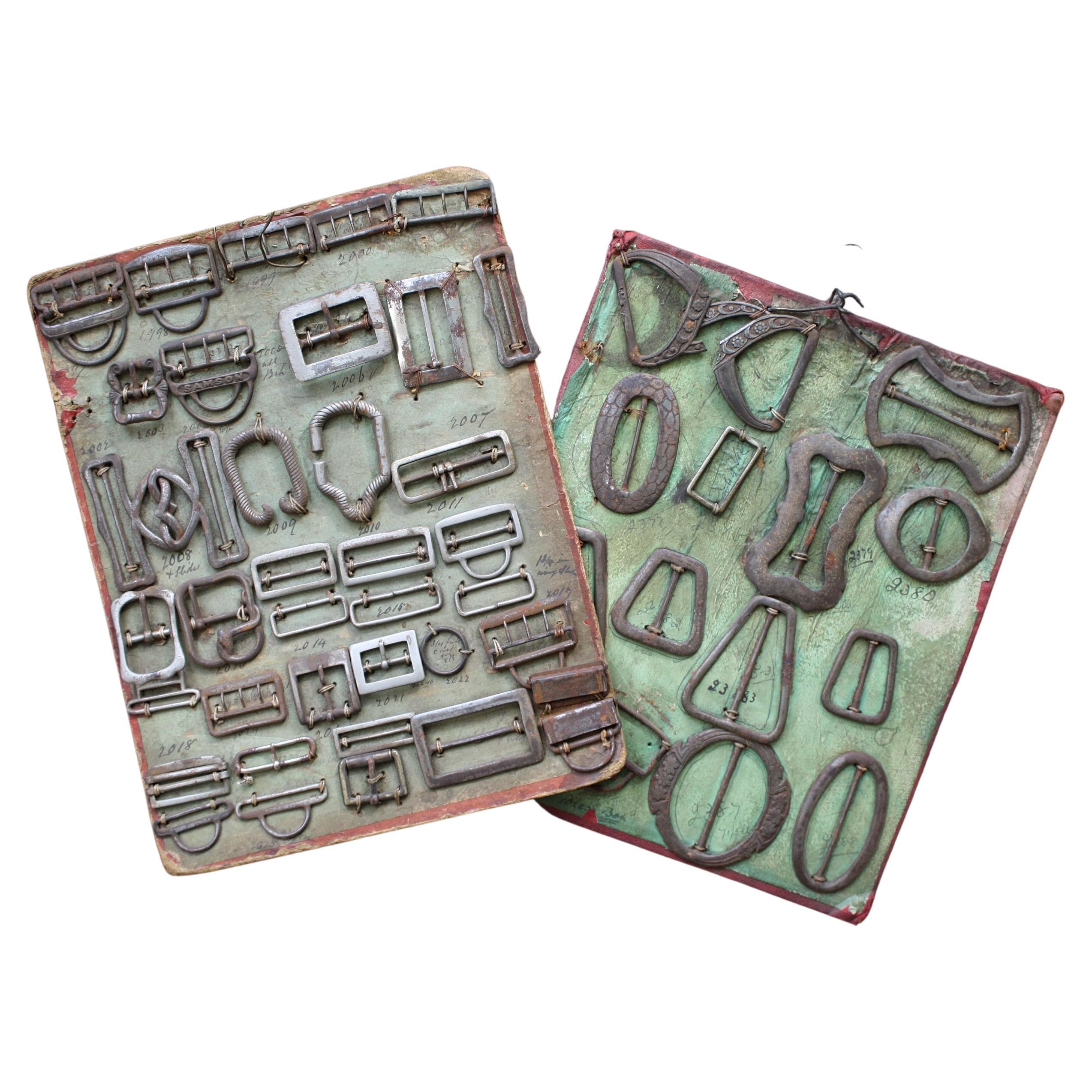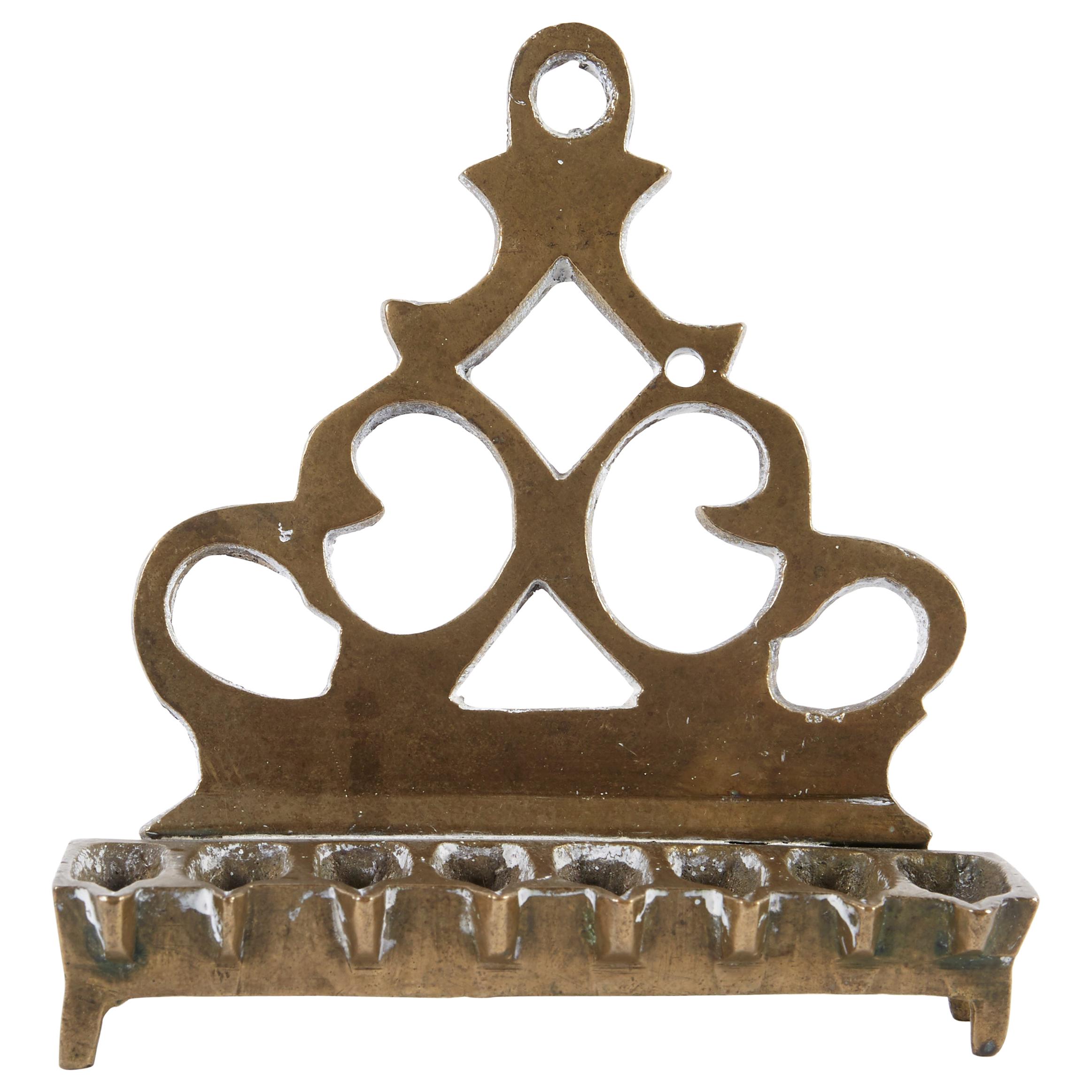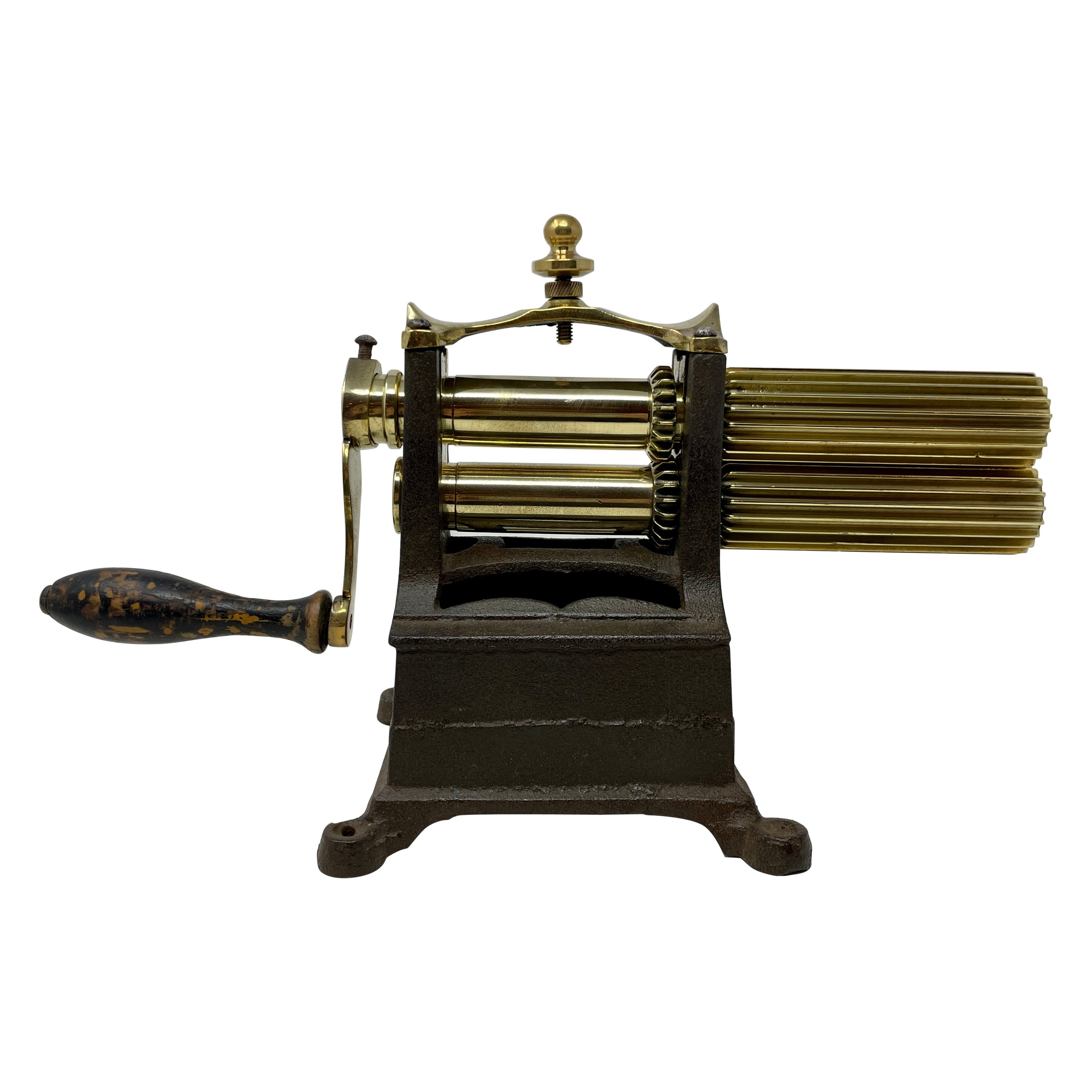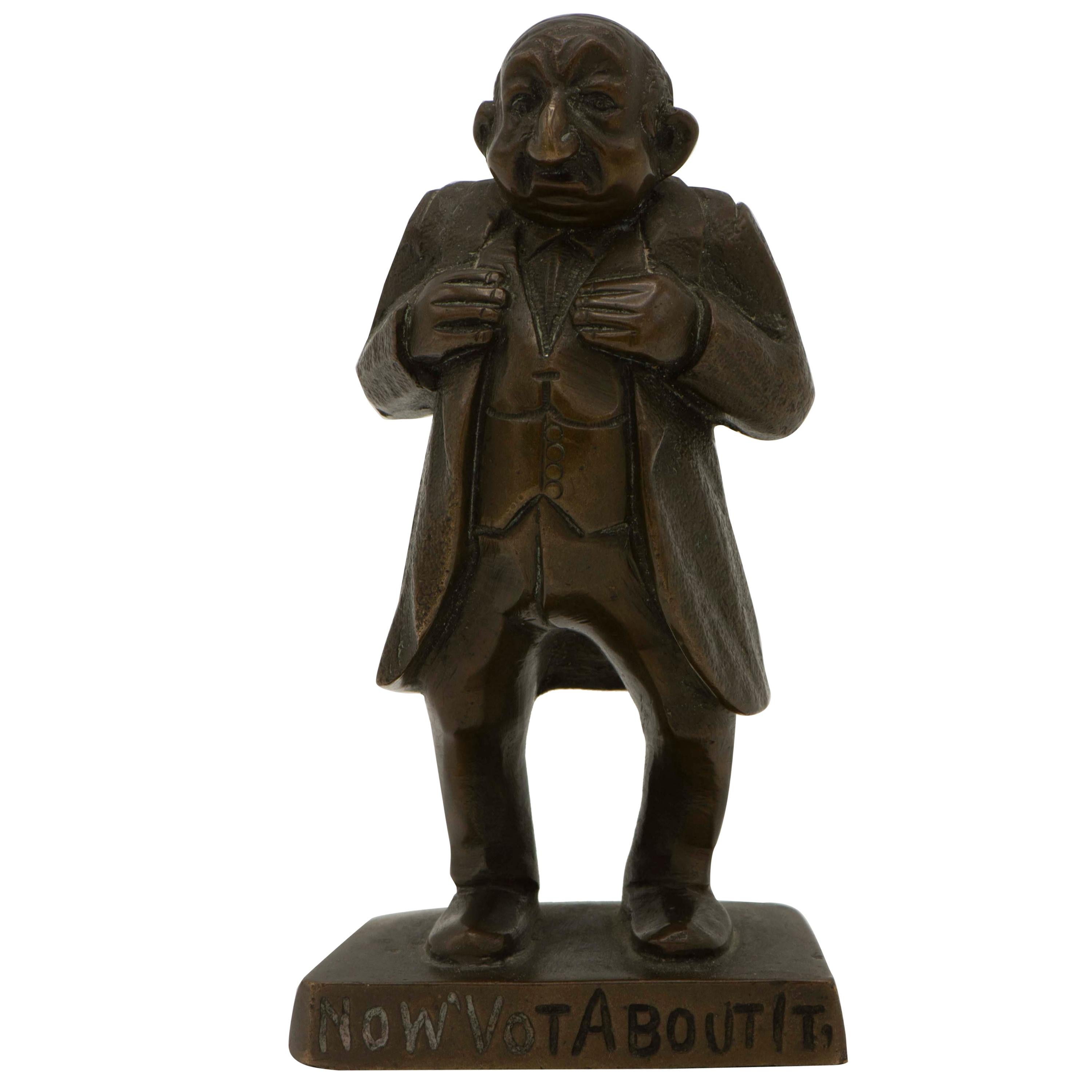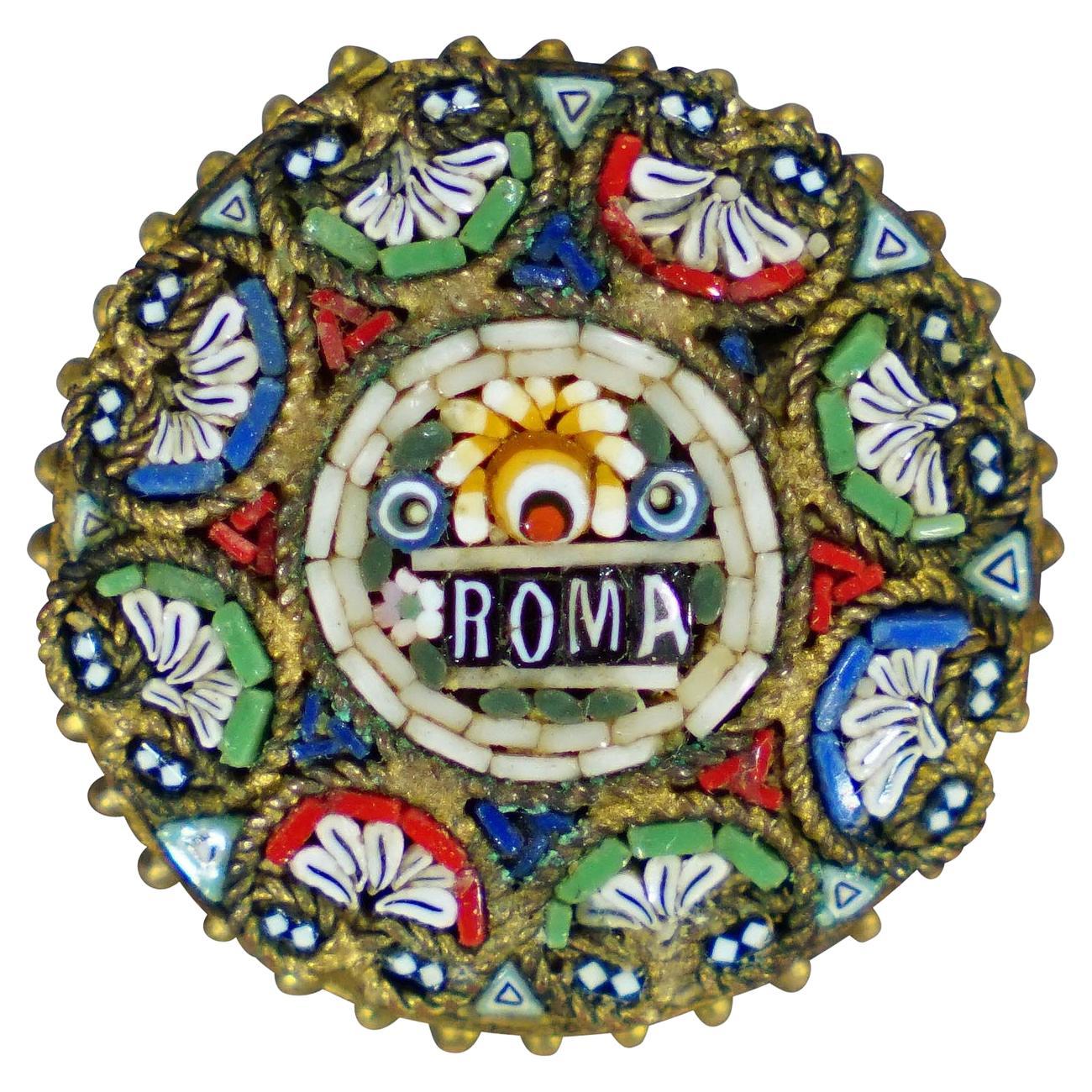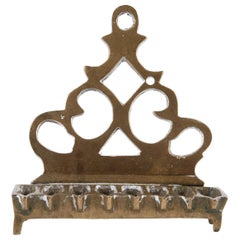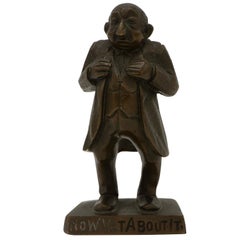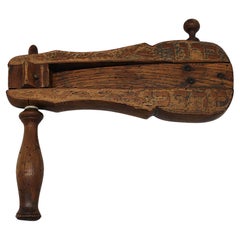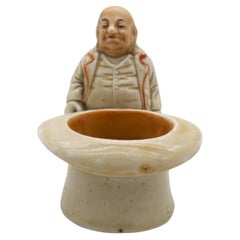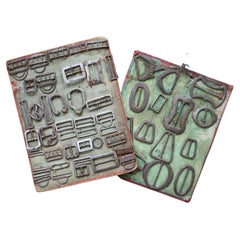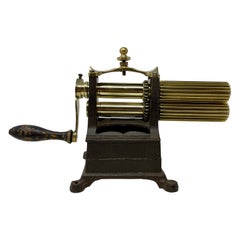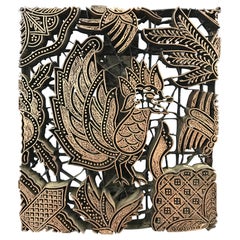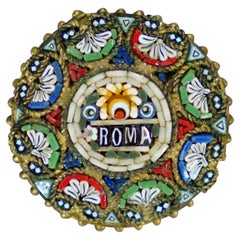Items Similar to Early 20th Century Eastern European Paper Cut Ketubah, Jewish Marriage Contract
Want more images or videos?
Request additional images or videos from the seller
1 of 5
Early 20th Century Eastern European Paper Cut Ketubah, Jewish Marriage Contract
About the Item
An Eastern European Kethubah Strikingly Decorated in Papercut Form, and with the Central Traditional Hebrew Text of a Most Uncommon Petite Appearance.
Uniting Yechezkel son of Shlomo with Peril daughter of Aharon. Manuscript in Hebrew composed in square script on paper. Signed by the Shochet and Cantor, Shmuel Aryeh b. Dovber and the Maggid, Hillel Ornisky. The Hebrew text at center, although prominently set, is composed within an unusually petite panel. Surrounded by elaborate papercut, featuring a Menorah below and crown above, amidst a multitude of animals and curling foliage, all painted in multiple colors. Traditional Hebrew texts above. The whole set against red cotton backing and housed within elaborate wooden frame.
‘Krol Erman’: 16th Tammuz 1907
The location in which this striking Kethubah was composed is possibly the town, where from 1925, R. Yoel Teitelbaum (later of Satmar), presided as Rabbi. It is located in northwestern Romania, near the border with Hungary and is pronounced Krula (in Yiddish), Nagykároly (in Hungarian) and Carei (in Romanian).
About the Seller
5.0
Recognized Seller
These prestigious sellers are industry leaders and represent the highest echelon for item quality and design.
Established in 2006
1stDibs seller since 2020
125 sales on 1stDibs
Typical response time: 19 hours
- ShippingRetrieving quote...Shipping from: New York, NY
- Return Policy
Authenticity Guarantee
In the unlikely event there’s an issue with an item’s authenticity, contact us within 1 year for a full refund. DetailsMoney-Back Guarantee
If your item is not as described, is damaged in transit, or does not arrive, contact us within 7 days for a full refund. Details24-Hour Cancellation
You have a 24-hour grace period in which to reconsider your purchase, with no questions asked.Vetted Professional Sellers
Our world-class sellers must adhere to strict standards for service and quality, maintaining the integrity of our listings.Price-Match Guarantee
If you find that a seller listed the same item for a lower price elsewhere, we’ll match it.Trusted Global Delivery
Our best-in-class carrier network provides specialized shipping options worldwide, including custom delivery.More From This Seller
View AllEarly 19th Century Polish Brass Hanukkah Lamp Menorah
Located in New York, NY
Brass Hanukkah lamp Menorah, Poland, circa 1810.
Cast in Bench form, on four feet. The backplate is cast and pierced featuring scrollwork.
This lamp was made by the technique known as "sand casting". This process begins with a wooden mold that was carved out to create negative space, which in turn is used to make the inverse form or shape to be used for the casting of metal. The mold is pressed into fine sand mixed with clay, then removed, and molten brass poured into the impression. When a mold wears out, a casting from that mold is often used as the mold for the next generation. Those later lamps...
Category
Antique Early 19th Century Polish Religious Items
Materials
Brass
Early 20th Century American Bronze Figurine of a Jewish Businessmen
Located in New York, NY
Bronze figurine of a self-satisfied, disapproving Jewish businessman with the caption: Now! Vot about it? (an imitation of the Jewish accent), heavy, cast bronze figurine...
Category
Early 20th Century American Historical Memorabilia
Materials
Bronze
Early 20th Century European Hand-Carved Wooden Grogger
Located in New York, NY
An early 20th-century European hand-carved wooden grogger (or gragger), a traditional noisemaker used during the Jewish holiday of Purim. The grogger produces a loud, clattering soun...
Category
Early 20th Century European Religious Items
Materials
Wood
A Porcelain Jewish Banker Figurine, Europe early 20th century
Located in New York, NY
A porcelain figurine depicting a Jewish banker in an anti-Semitic context is part of a broader category of caricatures and stereotypes that unfortunately persisted in Europe and othe...
Category
Early 20th Century European Porcelain
Materials
Porcelain
19th Century Needlepoint Tallit Bag, Jerualem
Located in New York, NY
An Intricate Jerusalem Textile, made in Jerusalem, 1886.
Double-sided large pouch. Wool thread embroidered on cotton net. One side has a lion and stag holding flags reading “Jerusalem” in Hebrew, which flank a crowned Ten Commandments. Titled in Hebrew “Swift as a deer, strong as a lion” (Ethics of the Fathers 5:20). “Jerusalem” is seen in large lettering, atop a pair of birds and flowers. Top scene of the reverse side is titled “Mount of Olives”, amongst a plethora of olive trees, and a cluster of buildings is titled “Chulda the Prophetess”, (where her and others tombs reside). Main scene is titled “The Western Wall”, which features the wall and outer structures with turrets and Cyprus trees. The Hebrew date of “1886” is revealed on the bottom corners. This delicate textile, incredibly vibrant in color after 130 years of being created, is a masterful, exceedingly rare work of art produced in Jerusalem by an unknown woman --- likely quite young, a teenager --- as a gift to an unknown individual. Too complex to be a “tourist trinket”, as we know of one other similarly-made textile that is in the collection of the Israel Museum, and is dated 1876: see the book “Jewish Folk Art: From Biblical Days to Modern Times”, page 122. A clue to where perhaps this was made is in the depiction of the lion and stag holding flags, as they are identical to those featured on the crest of Moses Montefiore. In the 19th century, Montefiore gave enormous sums of money to purchase land for Jewish settlements and establish schools in Palestine. This textile most likely hailed from a school for girls funded by Montefiore, and was made as either a gift for Montefiore himself, or another wealthy donor. As to the actual purpose of this textile, since it is in the form of a large pouch, its intended purpose might have been to hold a tallit (prayer...
Category
Antique 1880s Israeli Religious Items
Materials
Textile
18th Century Polish Brass Hanukkah Lamp
Located in New York, NY
The backplate is cast and featuring a deer in the center surrounded by open scrollwork. The side panels fitted with two servant lights, fronted by a row of eight oil fonts. Scholars theorize that these Polish Chanukah lamps that bear two servant lights (as opposed to the singular servant light normally found on a Hanukkah Lamp...
Category
Antique Mid-17th Century Polish Religious Items
Materials
Brass
You May Also Like
Early 20th Century Tradesman Sample Buckle Boards Haberdashery Shop
Located in Lowestoft, GB
A pair of early 20th century buckle sample boards, thick card with cord sewn steel buckles and hand numbered in graphite.
Faded green backing paper with a pleasing red boarder, s...
Category
Early 20th Century English Models and Miniatures
Materials
Steel
Antique Early 19th Century English Crimping or Goffering Iron, circa 1840
Located in New Orleans, LA
Antique early 19th century English crimping or goffering iron, Circa 1840.
Used to make ruffles, frills, flounces, and pleats in starched linen, the crimpling iron was first introduced in Italy in the early 17th century. Very popular from the Elizabethan era...
Category
Antique 19th Century Historical Memorabilia
Materials
Brass, Iron
Ink Pads for Fabrics, India, Early 20th Century
Located in Beuzevillette, FR
Stamp composed of a set of small welded copper plates forming a bird motif. These stamps were to be printed on the drapery.
Indian work, circa 1900.
Category
Early 20th Century Indian Folk Art Curtains and Valances
Materials
Copper, Iron
Antique Victorian Micromosaic Brooch with Gilded Framing, Italy Early20thCentury
Located in Berghuelen, DE
Antique Victorian Micromosaic Brooch with Gilded Framing, Italy early 20th Century
A Victorian micromosaic brooch with a central floral bouquet motif and the inscription "ROMA". Sur...
Category
Early 20th Century Italian Victorian Collectible Jewelry
Materials
Metal
Early 20th Century European Clock Tower Automaton Figures
Located in London, GB
Early 20th century European clock tower automaton figures
We are proud to offer an extremely rare set of European clock tower automaton figures, in the form of Persian / Turkish male dressed figures. Dated from the early 20th century, hand carved from wooden sections and detailed in gesso and paint. In completely original condition, later these figures have been secured to a 19th century ebonized wooden base for display purposes. These figures still have their original mechanisms in place, the metal rods extended from their backs, once pulled raise both hands and head, the mechanism is simple and on a pulley system. It is likely these figures would have been part of a larger group, which would have been animated once the clock tower struck upon the hour. This is the first time we have ever been able to obtain artifacts of this nature, and they are exceedingly rare in completely original form.
Size in inches: H 24” x W 21” x D 10”
Origin: Europe
Period: 1900-1920
Material: Wood & Gesso
Condition: These items are completely solid in structure and form. Wear is present across all the surfaces which includes crackled paint, worn surfaces, chipped gesso, and faded paint, these items are firmly secured to base pictured. The velour clothing...
Category
Vintage 1920s German Victorian Sculptures and Carvings
Materials
Gesso, Wood, Paint
Eastern European Cotton Embroidery, Early 20th C.
Located in Istanbul, TR
An unusual embroidery with a slightly heavy texture.
Category
Early 20th Century Balkan Pillows and Throws
Materials
Cotton
Recently Viewed
View AllMore Ways To Browse
Eastern European Painted Furniture
16th Century Crown
Large Religious Windows
Silver Mezuzah
Bronze Religious Plaque
Hanukkah Lamp Israel
Jesus Crucified
Religious Chalice
Holy Water Font
Antique Bronze Crucifix
Italian Tabernacle
Antique Mexican Religious
Antique Silver Spanish Cross
Bible Stands
Church Brass Cross
Judaica Lamp
Menorah Brass Israel
Orthodox Silver
